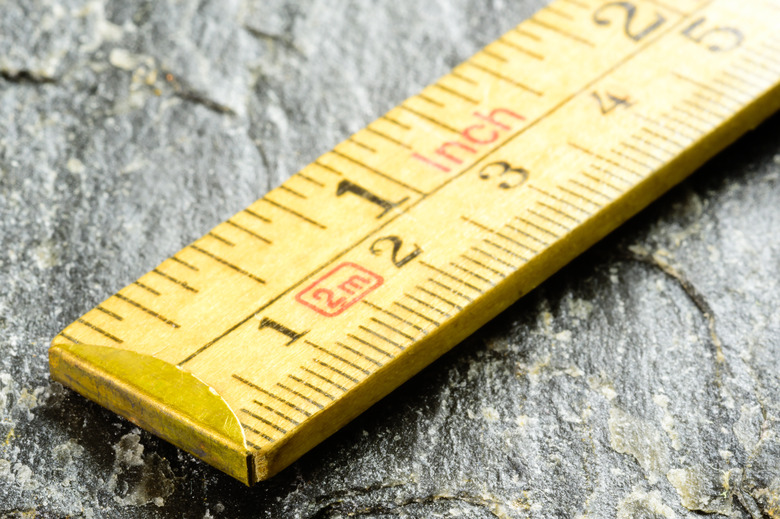How To Convert Square Metres To Lineal Metres
Square meters and linear meters measure two very different things. The measurement in square meters conveys an object's area, or the product of its length and width, in a single number. But linear meters convey just one dimension, which could be length, width, height or anything else. Measuring for some types of flooring and other building materials that come in rolls is one of the few circumstances in which you might be asked to convert from square meters to linear meters.
TL;DR (Too Long; Didn't Read)
To convert from square meters to linear meters, divide the square meters by the width of whatever material (flooring, wallpaper, etc.) necessitates the conversion.
Flooring and Other by-the-Meter Materials
Flooring and Other by-the-Meter Materials
If you're calculating flooring, you will, of course, need to know the area of the space you're covering. But flooring is sold by the linear meter, so when it's time to actually buy your materials you'll have to translate the concept of area back into a single dimension. Here's the trick: You must know the width of the roll of flooring (or other materials).
1. Calculate Area if Necessary
If you already know the area of the space you're dealing with in square meters, skip to Step 2. If you don't already know the area, measure or research the space's length and its width, and then multiply the two measurements together to get its area. For example, if the room you're dealing with measures 4 meters by 5 meters, you'd have an area of:
\(4 \text{ m} × 5 \text{ m} = 20 \text{ m}^2\)
2. Divide by the Width of Your Materials
Divide the area measurement by the width of your flooring material. So, for example, if your room measures 20m2 and the roll of flooring is 2 meters wide, you'd have:
\(\frac{20 \text{ m}^2}{2 \text{ m}} = 10\text{ m}\)
Note that your result, 10 meters, is neither the length of the room nor the width of the room. Instead, it's the length of the 2-meter-wide roll of flooring that you'd need to cover the floor of that 20m2 room.
TL;DR (Too Long; Didn't Read)
If you're dealing with a real-world construction problem, don't forget to add a "fudge factor" – for example, an extra 10 percent – to account for errors in measurement or cutting.
Cite This Article
MLA
Maloney, Lisa. "How To Convert Square Metres To Lineal Metres" sciencing.com, https://www.sciencing.com/convert-square-metres-lineal-metres-8689794/. 30 November 2020.
APA
Maloney, Lisa. (2020, November 30). How To Convert Square Metres To Lineal Metres. sciencing.com. Retrieved from https://www.sciencing.com/convert-square-metres-lineal-metres-8689794/
Chicago
Maloney, Lisa. How To Convert Square Metres To Lineal Metres last modified March 24, 2022. https://www.sciencing.com/convert-square-metres-lineal-metres-8689794/
